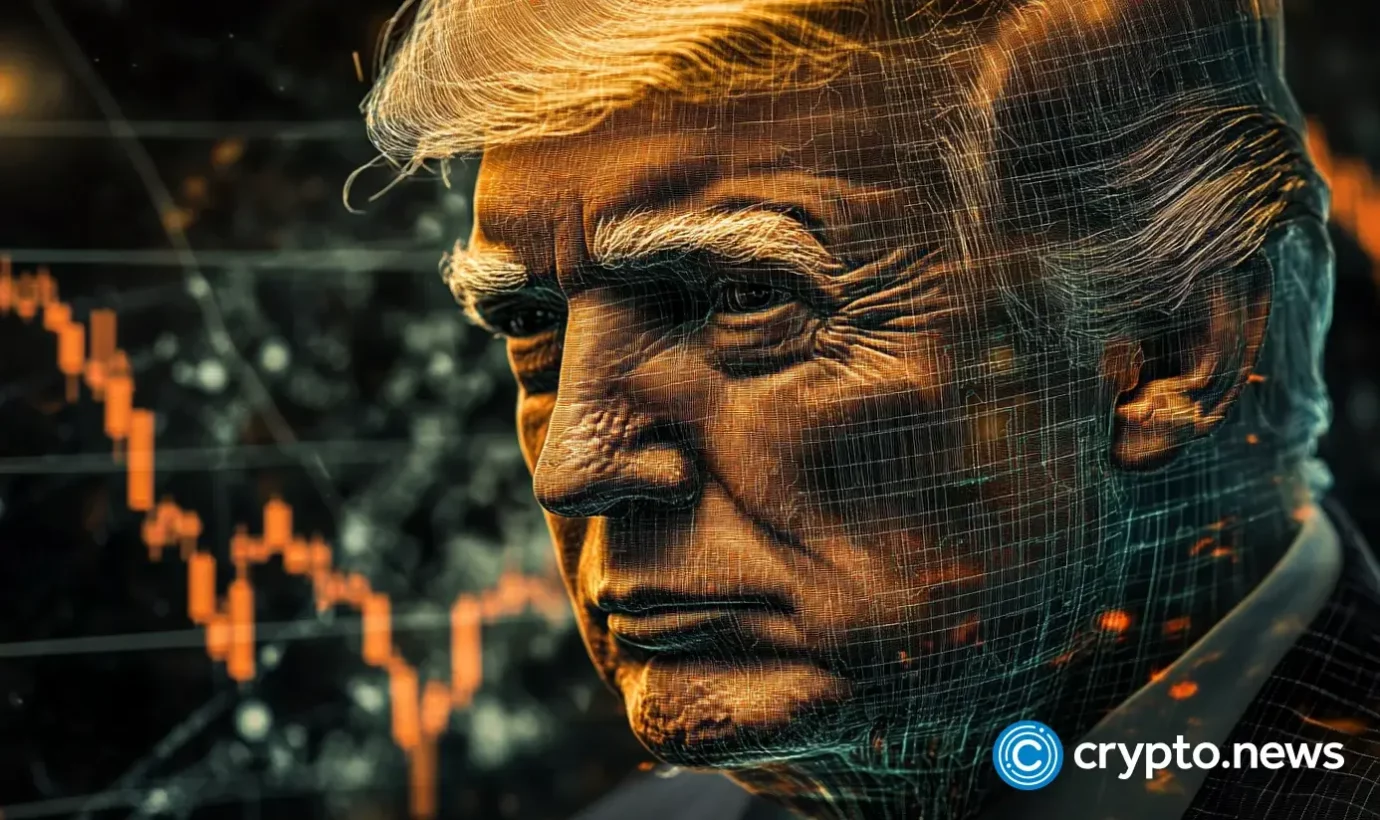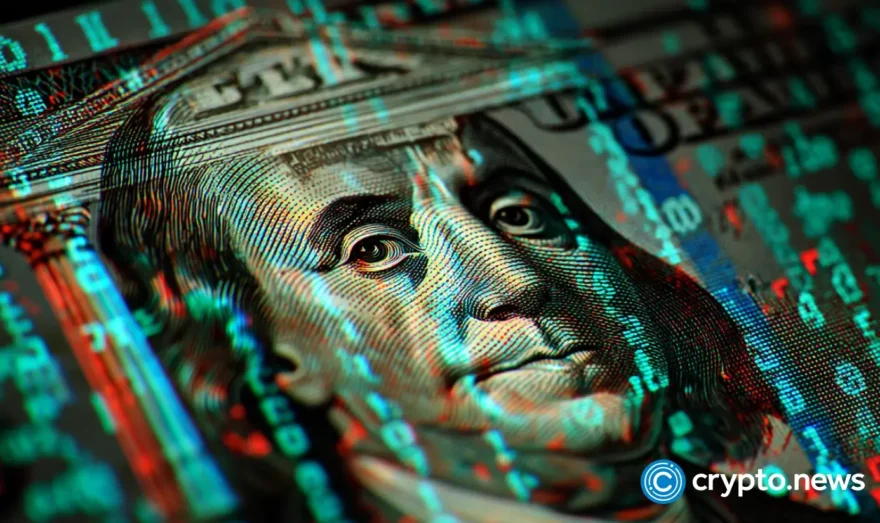Trump’s trade war: Tariffs, recession risks, and crypto volatility | Opinion

Disclosure: The views and opinions expressed here belong solely to the author and do not represent the views and opinions of crypto.news’ editorial.
Over the last few months, the crypto industry has been celebrating an evident pro-crypto shift in the US regulatory space. The optimism is well founded—the US president has his own memecoin, the SEC has already vowed to lower crypto enforcements, and earlier last month, the White House released its crypto executive order to establish regulatory clarity.
Under Trump’s term, the Securities Exchange Commission has also implemented SAB 122—which is said to pave the way for crypto adoption. There’s also a strong push towards a Bitcoin (BTC) reserve—not just in the US but globally.
Despite this optimism, the past week has made it abundantly clear that crypto is now more vulnerable to macroeconomic factors than ever before. On the day that President Trump announced tariffs on China, Canada, and Mexico, the crypto market lost $2 billion, according to Coinglass data.
Some experts indicate that original liquidations exceeded $10 billion—far worse than the liquidations during the FTX fallout. Factors including “buy the rumor, sell the news” might have been at play for the crypto market, according to the Nansen report.
At the moment, there is a brief pause on the tariff implementation, as Trump has agreed to postpone Canada and Mexico tariffs by a month. If implemented, these tariffs may heighten the risk of a recession by constricting consumer spending and increasing economic uncertainty.
Tariffs as a catalyst for economic contraction
Tariffs function as a tax on imported goods. Their intended purpose is to protect domestic industries by making foreign products relatively more expensive. However, this protectionism comes at a cost. When tariffs drive up the prices of goods, consumers tend to reduce their spending.
Consumer spending drives approximately 68% of the US GDP, so any sustained reduction in consumption can push overall economic activity below the threshold necessary to avoid a recession. Also, employment on all sides would take a big hit. The 25% tariffs discussed could result in a 0.25% job loss in the US. The impact would be much bigger for the other sides, with both Canada and Mexico projected to see up to 3% job losses.
The imposition of these tariffs could have severe spillover effects. Deutsche Bank analysts have also argued that sustained tariffs against Canada and Mexico—two of the United States’ largest trading partners—will be “far larger in economic magnitude” than the repercussions of Brexit on the United Kingdom.
Given the weight of consumer spending in the US and the sensitivity of these neighboring economies to shifts in trade volumes, it is not an overstatement to predict that Canada and Mexico could tip into recession in the coming months if the 25% tariffs are implemented.
The trade war escalation and its broader impact
Many stakeholders anticipated that these moves would hurt international trade flows, increase production costs, and drive up prices across the board. As domestic and international companies scramble to adjust supply chains, the uncertainty that accompanies such policy shifts can further depress economic activity.
Last week, crypto markets witnessed the volatility induced by these policies. When Trump agreed to postpone Canada and Mexico tariffs by a month. Bitcoin’s price recovered from $92,000 to over $100,000.
However, the relief was short-lived when China retaliated with its own set of tariffs, and the cryptocurrency’s price retracted to around $96,000 within hours. This rapid on-off dynamic highlights how sensitive markets have become to tariff-related news.
Inflation risks and Federal Reserve dilemma
Federal Reserve officials have also voiced concerns about the inflationary potential of large-scale tariffs. While they have stopped short of explicitly linking these policies to their forthcoming monetary policy decisions, the warnings are significant.
Earlier, Chicago Fed President Austan Goolsbee voiced a number of supply chain threats regarding the implementation of tariffs. Tariffs raise import costs, and as these costs are passed on to consumers, inflation then accelerates.
This scenario is worrisome, given that inflation erodes real incomes and can exacerbate recessionary pressures by reducing overall consumer spending. The Fed’s dilemma is acute.
On one hand, the central bank seeks to control inflation by tightening monetary policy. However, an overly aggressive stance on interest rates could compound the negative effects of tariff-induced economic slowdowns.
Gold remains the primary safe-haven asset
While digital assets like Bitcoin have struggled to maintain stability amid rising trade tensions, traditional safe-haven assets have experienced a renewed surge in demand. According to data from The Kobeissi Letter, gold reached an all-time high on February 3.
The rally in gold prices reflects investors’ instinct to seek refuge amid heightened market volatility and inflationary pressures. The dynamics behind this shift are rather simple. As tariffs push up consumer prices and undermine global trade, investors have become wary of the long-term economic outlook.
With the risk of recession and the possibility of further monetary tightening, gold’s relative stability makes it an attractive asset.
Conclusion
The coming weeks will prove decisive. If the US continues down this path of aggressive tariff imposition without achieving meaningful trade concessions, we may very well see heightened inflation and sustained market volatility.
At the same time, we could anticipate the onset of recession in key partner economies. Policymakers—and investors alike—must recognize that the costs of trade protectionism extend far beyond the immediate sphere of international commerce.
Ultimately, while some may argue that these tariffs could eventually force a renegotiation of trade terms, the evidence suggests that the risk of recession—and the attendant damage to consumer confidence and global liquidity—is too great to ignore.














